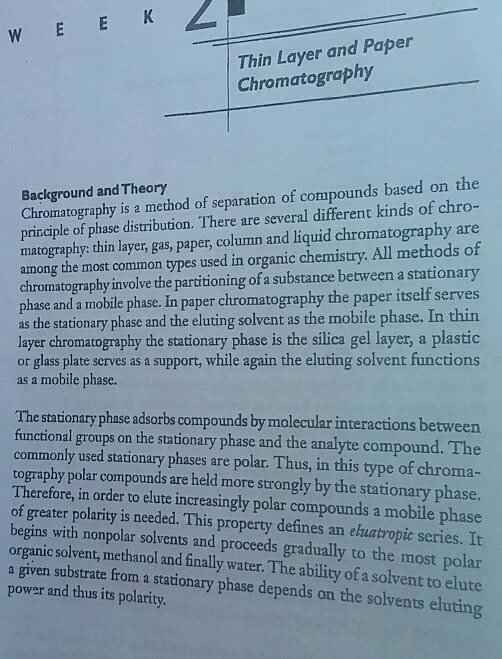CHM 1721 Study Guide - Final Guide: Hexane, Benzene, Elution
Document Summary
Tlc is when a thin layer of adsorbant (stationary phase) is attached to a plate (usually made of glass or aluminum) and the mobile phase passes over the plate and through the stationary phase. Tlc is used for reaction monitoring, for sample purification, and to determine the purity of samples. Silica is a polar material, and the mobile phase is an organic solvent. More polar compounds are attracted more strongly to the silica than to the solvent, and so move more slowly up the tlc plate. Less polar compounds are attracted less strongly to the silica and so move more quickly up the tlc plate. Increasing the polarity of the solvent makes a polar compound more attracted to that solvent, making it move up the plate faster (but still not as quickly as a non-polar compound). By using a uv light it is possible to compare compounds using tlc.



